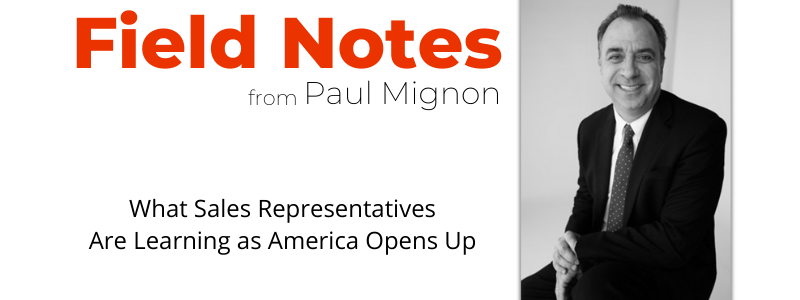Zoom and Webex Offer a Preview of Our Tech Enabled Future

In conversations with our field teams in recent weeks, I’ve heard how the pandemic created unusual stress and uncertainty. There was so much we couldn’t anticipate about risks of exposure to the virus, hurdles in technology adoption, the threat to business continuity, work/life balance, and other unknowns.
Every rep has a story about risks, persistence, and ultimately, about courage. The stories fill me with empathy and admiration. And I’ve come to understand our business in a new way. COVID-19 was unique, but Acts of Nature and tests to business continuity are inescapable.
What we understand today—something merely theoretical back in February—is that extreme events cannot be allowed to interrupt the delivery of accurate information, which enables medical teams to save patients’ lives. We play a crucial role in this process and technology is our ally. Perhaps most important, technology is not standing still.
Our education, training, and learning resources at Syneos Health helped us become comfortable with video conferencing tools. For our field force, the transition to video calls and virtual detailing was swift and effective. But in the next pandemic, or earthquake, or unforeseen climate-related event, I doubt very much we will be talking only about Zoom.
By then, we will have at our fingertips far more advanced tools for reaching physicians through multiple touchpoints, using the methods and media they prefer. Thanks to analytics and behavioral science, we’ll know when to press the gas pedal on some things and pump the brakes on others.
Some of these capabilities are already embedded or paired with Webex and Veeva. When the next Act of Nature arrives, will we be ready to use them? That is the No. 1 question on my mind.
Omnichannel Challenge
In recent meetings with our field staff, one man remarked that interruptions in the early phases of the pandemic gave him a welcome chance to explore training programs offered by our Learning Center, to hone technology skills, and to prepare for uncertainties ahead. This was good to hear, and it’s the crux of our long-term challenge: the advent of multichannel and omnichannel engagement.
For years, we’ve been hearing about multichannel and omnichannel. The COVID-19 crisis gave us a taste of it, with virtual detailing and digital outreach, augmented whenever possible with face-to-face meeting. While this worked in a crisis, we still don’t know how sustainable it will be. Eight months from now, we may see physician interest in webinars and virtual engagement dropping off—just as we gear up for continuous, digitally segmented and stratified outreach.
Multichannel and omnichannel technology gives us the ability to look at the physician holistically, understand each interaction with digital media, measure each impression, assess each stimulus. And insights gleaned from behavioral sciences can tell us when the outreach is enough, when to dial back, and how to calibrate engagement so that the right information flows from product innovator to provider to patient without distracting or swamping medical teams on the front lines.
As my colleague Rich Gorman explained in a recent webinar with MM&M, we’ll need to get more creative in designing the experience so the physician can control the story—perhaps engaging briefly at one moment, then coming back to go deeper. Maybe there will be a scientific dialogue with an MSL, or a brief message from a promotional piece, depending on what we have learned about his or her preferences. Monitoring behavior changes, we’ll be able to adjust the physician profile dynamically.
Skillsets and education
For the field force on the frontlines in an omnichannel world, everything will hinge on education and training. The assets we provide as an organization will play a critical role. But this is also about the skillsets each rep embodies and their willingness to stay in the saddle as the terrain shifts.
Our understanding of what is possible was shaped by our experiences back in March and April. But as I said, the learning curve doesn’t begin and end with Zoom and Webex. Today we are developing new training materials that will help our field force get ready for next Act of Nature, social shift, or technological disruption. In coming months, many more tools will be added that will lay the groundwork for true multi- and omnichannel engagement.
New technological skills will be seminal to supporting the medical community. And mastering them will not be discretionary. Training will ensure that whatever Nature has in store, we will be ready.

